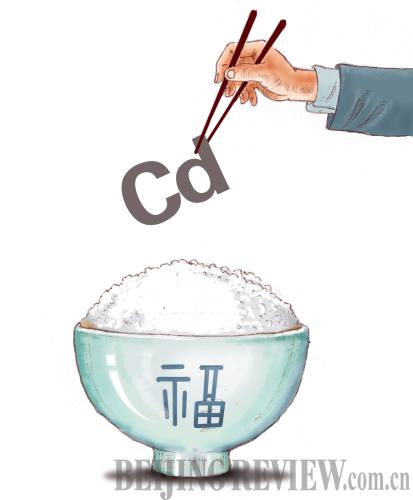|
 |
|
(CFP) |
In 2010, the MEP found 960 industrial companies out of 10,896 made use of heavy metals violating environmental standards, leading to mass pollution of arable land.
Another major cause of soil pollution is the overuse of agricultural chemicals. Figures from the Soil and Fertilizer Institute under the Chinese Academy of Agricultural Sciences (CAAS) show that in half of the regions surveyed, the average level of nitrogen fertilizer use is 318 kg per hectare, far exceeding the internationally accepted limit of 225 kg.
Zhuang Guotai, Director of the MEP's Nature and Ecology Conservation Division, said that only 35 percent of fertilizer used by a typical Chinese farm actually contributed to the growth of crops, meaning the rest was washed into waterways or just left on the land.
According to Huang Hongxiang, a researcher with the CAAS' Institute of Agricultural Resources and Regional Planning, year-round planting requires the large-scale use of pesticides and fertilizers and this inevitably creates soil and water pollution.
"Some kinds of pesticides and fertilizers can cause heavy metal pollution so we should reduce or avoid using them altogether," Huang said.
Control efforts
A MEP report reveals that 21.5 percent of soil samples from 364 rural villages failed to meet national soil quality standards in 2011.
In Hunan, where mining and nonferrous metal production are prevalent, 715,000 hectares of land, or roughly 3.4 percent of the province's total area, are contaminated by heavy metals, a CAS report says.
Another study conducted by the Ministry of Land and Resources (MLR) in Hunan identified elevated levels of heavy metals in a 250 km by 10 km belt adjacent to the Dongting Lake, China's second largest freshwater lake. Nearby crops, reeds and shellfish were found to have been contaminated with cadmium.
In a serious case of heavy metal pollution in Liuyang of Hunan in 2009, cadmium-containing pollutants from a chemical plant affected more than 500 people and polluted the land within a radius of 500 to 1,200 meters of the plant.
In addition to health hazards, soil pollution also leads to a reduction in grain production.
According to an MLR report in January, heavy metal pollution alone results in the loss of 10 million tons of grain and the contamination of another 12 million tons annually, incurring 20 billion yuan ($3.21 billion) in direct economic losses each year.
Gao Shengda, Secretary General of the China Environmental Remediation Industry Alliance, said that the nation must develop targeted soil remediation techniques and bring in advanced technology from overseas.
Hou Yanlin, a soil scientist with the Ministry of Agriculture (MOA), suggests the government establish a monitoring and early warning system for soil contamination so that it can evaluate how severe and widespread the pollution is.
In January, the State Council, China's cabinet, also publicized a circular on soil pollution that sets out a plan to contain the increasingly severe problem by 2015.
The circular ordered a thorough survey into soil conditions be conducted by 2015 and a system be established to protect arable land and sources of drinking water.
It proposed building a soil environment monitoring network to cover 60 percent of all arable land and drinking water sources that serve more than 500,000 people, so that regular surveillance will be possible for these regions.
The State Council also required rigorous controls on newly polluted soil, which prioritize the prevention of soil pollution and treatment of contaminated land.
| 